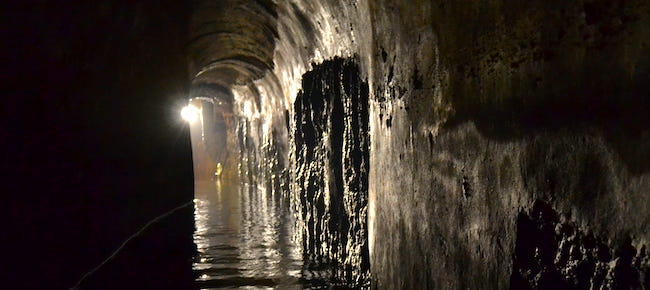
Death of the Students
24,000 students of Rebbi Akiva died of disease between Pesach and Shavuos. Some say that the disease completed its course on Lag Ba’omer; therefore this day is commemorated with simcha.
The Pri Chadash (Orech Chaim 493:2) and the Shem Aryeh (O. C. 14) struggled to understand this. Since all the 24,000 died, where is there room for simcha? They had all died…
The Shem Aryeh explains: It was not that they died in one year. There were deaths every year — but only between Pesach and Lag Ba’omer. Therefore, when Lag Ba’omer would come each year, it was a time for rejoicing — the danger had passed for the time being.
This is similar to Tu B’av, which was celebrated with great joy in the Midbar each year — because the deaths of Tisha B’av would cease at that time. (The Vilna Gaon already made this comparison in his notes to Shulchan Orech 493:9.)
The Differing View of the Maharil
Still, there are those who understand that deaths did occur on Lag Ba’omer. The Maharil, for example, writes that Lag Ba’omer is merely symbolic. The students died during 32 days of the Omer, throughout the period between Pesach and Shavuos. They commemorated this number by celebrating the 33rd day, although death actually continued until Shavuos.
The Pri Megadim (493, M.Z. 1) and the Biur Halacha (493) point out that this defies explanation. Why celebrate on the 33rd if people were still dying on that day? They conclude: “There is some other reason for the joy.”
Rebbi Shimon Bar Yochai
People often say that the concept of the Hilula of Rabbi Shimon Bar Yochai is not mentioned in halacha. This is incorrect. The Magen Avraham refers to it in his cryptic comments: “Someone once said the (mournful) ‘nachaim’ tefila on Lag Ba’omer and was punished.” (Orech Chaim 493:3) The reference is to a story regarding the Ari at the grave of Rebbi Shimon on Lag Ba’omer from Sha’ar Hakavanos.
The Ateres Zekeinim, on the page of Shulchan Orech (Simon 493) relates the story; the Chai Adom clearly states that Lag Ba’omer is the Hilula of Rebbi Shimon (131:11). See also the Birkei Yoseif.
Questions and Issues
However, there is much debate about this. The Chasom Sofer (Shu”t, Y. D. 233) questions celebrating the death of a Tzadik. He also questions the concept of having a Yom Tov which does not commemorate a neis.
The Shem Aryeh (Orech Chaim 14) writes that Rebbi Shimon was to be executed by the Romans, as is related in Shabbos 33b. Those given to execution were not to be buried. Rebbi Shimon and his son miraculously survived in the cave for twelve years; the fact that he was buried proves his miraculous survival.
We are not celebrating his death, but his miraculous life and teachings.
The Pri Chadash commentary to Shulchan Orech (Orech Chaim 493:2) mentions that Lag Ba’omer may represent the remaining students of Rebbi Akiva — those talmidim whom he acquired after the death of the 24,000. (1)
So it all fits together: Tragically, Rebbi Akiva lost thousands of students. Imagine the loss of Torah! Yet, he found additional students, who survived, expounded and expanded Torah learning exponentially. Chief among them was the illustrious Rebbi Shimon, whose miraculous survival helped advance the further dissemination of Torah throughout the ages.
Despite the most tragic losses, Torah perseveres.
In the Merit of Rebbi Shimon
The Sha’ar Yisochar (1, p. 94) writes that the zechus of Rebbi Shimon brought about the end of the plague. Although Rebbi Shimon was much later, according to the Shem Aryeh above, the disease came back every year. There must have been a point where the illness was eradicated. To the Sha’ar Yisochar, it seems that the disease ended with Rebbi Shimon.
********
Among the precious neshamos who passed away recently, was our dear friend and chavrusa, Efraim Garfinkel, along with his son Doniel, and mother, Bluma Feiga. They passed away between Pesach and Lag Ba’omer… These were souls whose love of Torah and mitzvos were exceptional. I would say renowned, but I doubt many knew the extent of their unbelievable acts of chesed. We will always remember your devotion and dedication!
Hakadosh Baruch Hu, on the zechus of Rebbi Shimon, let this be the end of the plague! We have suffered enough!
“Bila hamaves l’netzach, umacha Hashem Elokim dima me’al kol panim — He will destroy death forever, and wipe away the tears from every face…” (Yeshaya 25:8)
********
What Will We Eat?
In Parshas Behar, we are taught about Shmitta and Yovel. Every seventh year, the land must lay fallow. As the seventh year approaches, you may struggle with faith — what will we eat? Sometimes, you will not be able to work the land for two consecutive years — the 49th and 50th. How will we manage? Hashem answers: I will command my brocha for three years!
Even if you cannot work the land for years, Hashem will command his brocha!
Regarding the mon, the Torah states (Devorim 8:3): “He afflicted you, starved you, and fed you the mon, which you have not known, nor did your fathers know; in order that you should know that it is not by bread alone that man lives, but by all that comes from the mouth of Hashem man lives.”
Rav Avraham Ibn Ezra explains. By bread alone man does not live, but he lives by a
power granted from above, by Hashem’s command. The proof is that for years you did not eat bread — but you lived.
Hashem can grant you strength with the bread, or without the bread…
The Ramban explained Rebbi Akiva’s view regarding the mon (Shemos, 16:6). Rebbi Akiva said that the mon was a derivative of the higher light, which physically materialized at Hashem’s will. Thus, to Rebbi Akiva, this sublime spiritual substance became an edible material as Hashem commanded, and sustained the Jews for 38 years.
With Hashem’s will, we can survive. Even if you cannot work, Hashem will command his brocha!
______________
1. The Chida writes that according to some, it is not certain that Rebbi Shimon died on Lag Ba’omer; rather, it is the day in which Rebbi Akiva transferred smicha to his remaining students. (Piskei Teshuvos [493:8] in the name of the Sdei Chemed.) See also Pri Tzadik, who writes that Lag Ba’omer is a celebration for Rebbi Akiva; however, since Rebbi Akiva was killed, the celebration surrounds Rebbi Shimon. Only Rebbi Akiva recognized Rebbi Shimon’s strength, as related in Yerushalmi Sanhedrin.


